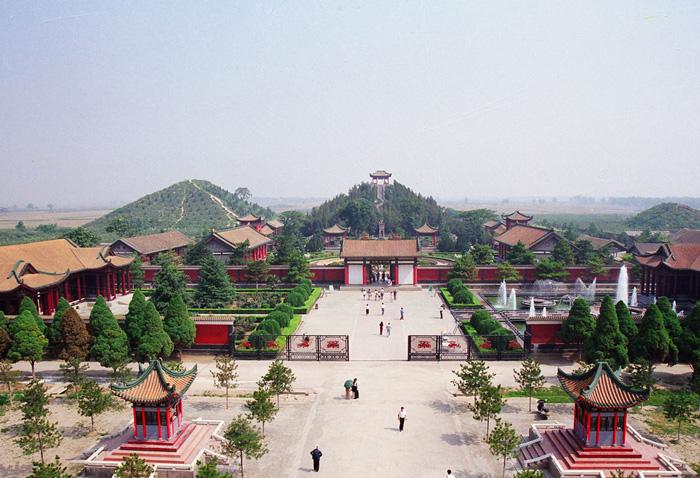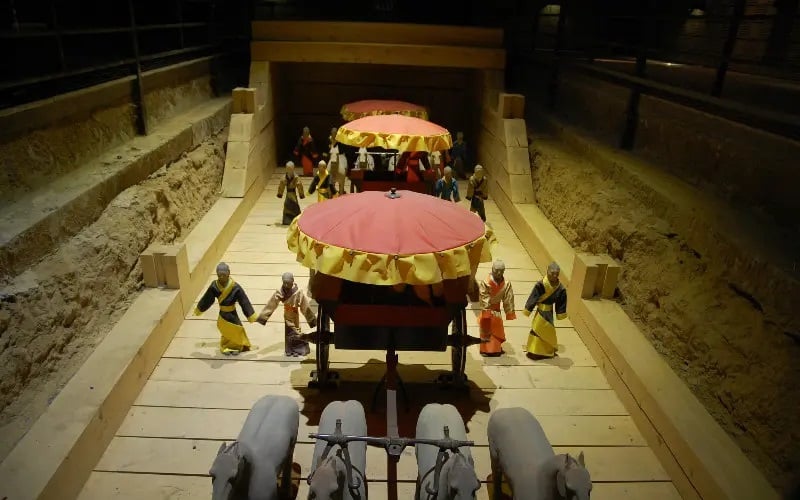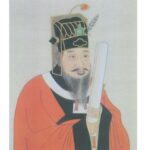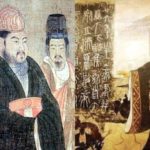China’s first unifier, Qin Shi Huang, is globally renowned for his monumental historical legacy, particularly his mausoleum, famous for its terracotta army of 8,000 statues, which stands as one of the greatest archaeological finds ever made.
However, another emperor in China’s history built an even more splendid dynasty, with a tomb that surpasses that of Qin Shi Huang in both scale and value. Modern historians remark that the mausoleum of Han Wudi, or Emperor Wu of Han, is deserving of recognition as one of the most outstanding relics of Chinese civilization.
Han Wudi, the longest-reigning emperor in China until he was surpassed by Kangxi, led the Han dynasty to its golden age, expanding its influence across territories and shaping the concept of Han identity within Chinese cultural identity.
Although not ranked as the number one greatest emperor, Han Wudi has always held an important place in the hearts of the people. He ascended the throne at just 16 years old and passed away at 69. Even at 18, he began planning his grand mausoleum, demonstrating the foresight and vision of a great ruler.

Han Wudi remains an important figure in China’s history, despite not being ranked as the greatest emperor.
Han Wudi’s Mausoleum: A Half-Century Construction
Located about 40 km from Xi’an, Shaanxi Province, Maoling Mausoleum is considered a significant part of the complex of nine Han dynasty imperial tombs. This mausoleum is not only historically valuable but also showcases the grandeur of Emperor Han Wudi.
An interesting tale about Han Wudi says that, as a youth, he once stumbled upon a dragon-like creature while hunting in Maoxian County. Taking this as an auspicious sign, he decided to choose this area for his mausoleum when he was just 18 years old.
Han Wudi passed away at 69 and was entombed at Maoling just 18 days after his death. However, the reason this mausoleum took over half a century to complete was due to its massive scale and complexity.
In the 1940s, an American military pilot discovered a pyramid-like structure while flying over the area. Three decades later, when US-China relations improved, the pilot wrote to the Chinese government, suggesting they investigate his discovery. A team of experts was dispatched to the area, and they confirmed it to be Han Wudi’s mausoleum based on the coordinates provided by the pilot.
From above, Maoling Mausoleum resembles a lush green pyramid, standing at a height of 46.5 meters and covering an area of 60,000 square meters. In feudal Chinese culture, death was not just an end but also an important transition. Thus, Han Wudi ensured that his mausoleum matched the grandeur of his life’s achievements, continuously overseeing its progress and expanding its design.

Maoling Mausoleum, seen from above, resembles a lush green pyramid.
According to Han-era documents, Han Wudi transformed an empty plot into a magnificent construction site, mobilizing tens of thousands of workers. Over 5,000 officials and servants were also assigned to live in the area to supervise the work.
Notably, in the second year of construction, he established a satellite city near Maoling, accommodating not just workers but also officials, nobles, and entrepreneurs of that time. At its peak, the city’s population reached 270,000.
Han Wudi’s mausoleum is not just an architectural marvel but also a symbol of a great ruler’s vision and eternal aspirations.
Han Wudi’s Mausoleum: An Underground Artistic Masterpiece
Maoling Mausoleum, the resting place of Han Wudi, stands out for its pyramid-like shape, but its true uniqueness lies in the system of important underground chambers. Archaeological records indicate that this subterranean palace covers an area of 6,000 square meters and reaches a depth of 30 meters, with a road leading down that can accommodate a carriage pulled by six horses.
For decades, Chinese archaeologists have conducted excavations at this mausoleum site. However, the underground palace has not yet been accessed due to various reasons. Based on studies of other Han dynasty tombs, archaeologists have made conjectures about the structure of the emperor’s resting place.
According to historical sources, Han Wudi’s body was placed on a bed made of jade, inside a coffin of precious wood. He was dressed in an imperial robe embroidered with gold thread and adorned with jade, with a large jade piece placed in his mouth. In Han culture, placing jade in the mouth of the deceased was believed to help preserve the body for eternity.
The imperial robe, connected with gold thread and decorated with over 2,000 pieces of precious jade, was an exclusive symbol of Han emperors and princes. An important discovery was made in 1968 when archaeologists excavated the tomb of Zhongshan King Liu Sheng, Han Wudi’s half-brother. This was the first time an intact jade-adorned imperial robe had been found, shedding new light on the customs and aesthetics of the Han dynasty.

Han Wudi’s body was placed on a jade bed inside a precious wood coffin, according to historical sources.
Maoling Mausoleum is not just the resting place of a great emperor but also a cultural heritage site, showcasing the complexity and advancement of underground architectural art during that period. The combination of historical, cultural, and artistic elements in this mausoleum truly creates a monument of far greater value than that of Qin Shi Huang.
Han Wudi’s imperial robe stood out with its gold thread connections and over 2,000 pieces of precious jade. Chinese archaeologists note many similarities between this robe and that of his half-brother, indicating the opulence and refinement of the royal style at the time.
In his later years, Han Wudi indulged in luxurious living, ordering the construction of lavish palaces and embracing superstitious beliefs. Similar to Qin Shi Huang, who lived a century before him, Han Wudi also sought the elixir of life in the hopes of prolonging his lifespan.
Historian Sima Guang from the Song dynasty described Han Wudi as extravagant, arrogant, and proud. Before his death, he ordered that a vast amount of wealth, including gold, silver, jewels, statues of his favorite animals, and a book he had read only once, be buried with him, all enclosed in a golden chest.
Due to the immense wealth Han Wudi wished to take with him, some of the funerary objects had to be placed outside the underground palace by Han dynasty officials. This led to local residents discovering a series of valuable artifacts over time, continuously enriching the cultural heritage of the area.
Most of the artifacts collected from Maoling Mausoleum are now considered national treasures, with many intricately carved jade decorations. The carvings of dragons, birds, and tigers found here are among the finest ever discovered in China, reflecting the splendor and artistic talent of the Han period.
The Cursed Son of Li Shimin: An Innocent Death and a Prophecy Fulfilled
The beloved son of Li Shimin, the infamous first emperor of the Tang dynasty, uttered a sinister curse on his deathbed. Little did anyone know, this curse would come to fruition six years later. This chilling prophecy haunts us to this day, leaving us with a chilling reminder of the power of words and the dark mysteries of the beyond.






































